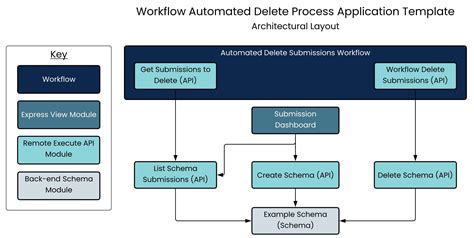Knowt Widget: Removing Deleted Sets - Enhance Your Workflow
The Knowt Widget is a powerful tool for organizing and managing information, but sometimes you need to clean up your workspace. Deleted sets, lingering in the background, can clutter your interface and potentially impact performance. This article will guide you through the process of efficiently removing these deleted sets, ensuring a streamlined and optimized Knowt Widget experience. We'll also address common questions users have about this process.
What Happens When I Delete a Set in Knowt Widget?
When you delete a set in Knowt Widget, it's not immediately purged from the system. Instead, it enters a temporary holding state. This is a safety net, preventing accidental permanent deletion of valuable data. Think of it as a recycle bin for your Knowt sets. This temporary storage allows you a grace period to recover accidentally deleted sets if needed. However, these deleted sets still take up space and can impact the overall user experience.
How to Permanently Remove Deleted Sets in Knowt Widget
The process of completely removing deleted sets varies slightly depending on your operating system and the specific version of the Knowt Widget you're using. However, the general principle remains consistent. You'll typically need to access a settings menu or a dedicated area within the Knowt Widget application to manage these deleted items.
Unfortunately, specific instructions are impossible to provide without knowing the exact version of the Knowt Widget you are using. The developer's documentation or support website should provide detailed, version-specific instructions. Look for a section on "Settings," "Preferences," "Data Management," or "Deleted Items."
Many applications handle this with a dedicated "Clear Deleted Sets" or "Empty Trash" button. Look carefully for such a function within your Knowt Widget interface.
What if I Accidentally Deleted a Set I Need?
Don't panic! The temporary storage of deleted sets is designed precisely for this situation. Before permanently removing deleted sets, carefully review the list of recently deleted items. If you find a set you need to recover, restore it before proceeding with the deletion process. The exact method for restoring deleted sets will again depend on your Knowt Widget version, so consult the documentation.
Does Removing Deleted Sets Improve Performance?
Yes, removing deleted sets can significantly improve the performance of your Knowt Widget. By clearing out these temporary files, you free up system resources, leading to faster loading times, smoother operation, and a more responsive user interface. Regularly removing deleted sets is a recommended best practice for maintaining optimal performance.
How Often Should I Remove Deleted Sets?
The frequency with which you should remove deleted sets depends on your usage patterns and the amount of data you manage within Knowt Widget. However, a good rule of thumb is to perform this cleanup at least once a month or whenever you notice a decline in performance.
Can I Automate the Deletion of Old Sets?
Many applications offer features to automate tasks like deleting old data. While the specifics are dependent on your Knowt Widget version, check the settings or preferences to see if an automated cleanup option is available. This can further enhance your workflow and ensure a consistently clean and efficient workspace.
Conclusion
Regularly removing deleted sets in Knowt Widget is a crucial step in maintaining a streamlined and efficient workflow. While the exact steps might differ slightly depending on your version, the core principle remains the same. Remember to always check for accidentally deleted sets before permanently removing them. By following these guidelines, you can ensure your Knowt Widget remains a powerful and responsive tool for managing your information. Remember to consult the official Knowt Widget documentation or support for specific instructions tailored to your version.

